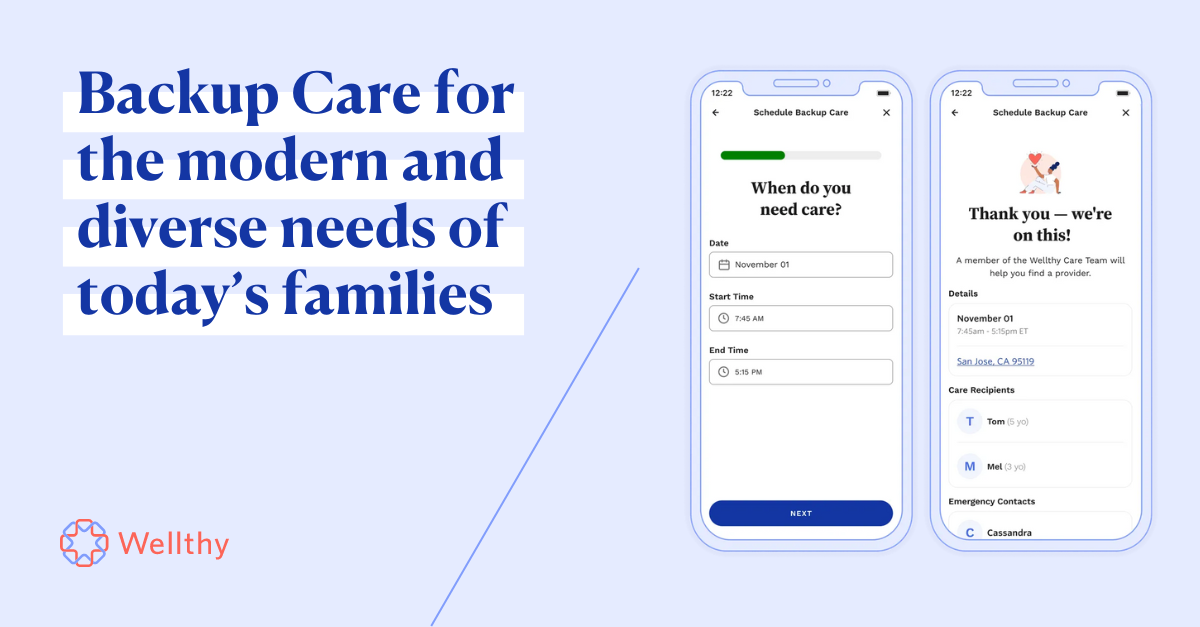Women play one of the most central roles in today’s care economy — and the impact of caregiving on women is felt in every corner of women’s health, gender equity in the workplace, and childcare and healthcare policy.
Women are 2.2 times more likely to take on unpaid family caregiving roles than men, according to the Journal of the American Medical Association. That’s a national data point that we see in our own data here at Wellthy, too. Looking at data from last year, 65% of our active projects were started by women — with ‘daughter’ and ‘mother’ being two of the top roles for Wellthy members.
Annually every March we celebrate International Women’s Day and Women’s History Month. When it comes to the unique impact of caregiving, child care, and elder care on women, it’s a timely moment to both recognize and lift up so many women caregivers — unsung heroes who absorb a disproportionate amount of family care responsibilities — as well as dive into the enormous opportunity before us to make the lives of so many women caregivers less stressful and more equitable, and to reshape our priorities and policies to address the sizable gender gaps when it comes to care.
This month Wells Fargo released a new report, Can’t Grow Old Without Her: Women's Central Role in a Growing Eldercare Economy, and their findings underscore the very fact that as seismic population shifts take shape in our country and around the globe, “women have and are positioned to shoulder a disproportionate share of caregiving ahead.”
A few of their key findings and data points:
- Eldercare needs have never been higher: The percentage of Americans aged 65 and over has reached a historic high of 22%. Between today and 2034, it's expected that those aged 75 and older will represent over half of the anticipated 19 million growth in the U.S. population. Assuming, conservatively, that the proportion of the population facing challenges with personal care stays the same in a decade compared to today, the aging population in need of caregiving services will rise by an additional 1.7 million.
- The impact of caregiving on women affects their finances, as well as an employer’s bottom line: Unpaid family care responsibilities are far more likely to require women to miss work, reduce their hours or go from full-time to part-time, or leave the workforce entirely. And that has immense consequences for employers: “Not only do these dynamics hurt women's earnings and contribute to the persistent pay gap with men, but unpaid care demands reduce the labor pool from which employers can draw upon. In 2023, 1.9 million women ages 55+ were not in the labor force due to family obligations, seven-times the number of men of the same age group.”
- The care crunch may affect women more sharply, but it will be felt by all: We are heading toward a dynamic where no family, employee, workforce, or industry will avoid the effects of the expanding caregiving crisis. “The growing number of families requiring care means that the care crunch will be felt by all, whether through the need to find and afford paid care, or the need to juggle employment with unpaid care.”
Gender-diverse companies are 15% more likely to outperform their peers, and companies with more women on the board statistically outperform their peers. That means that caregiving benefits take on an increasing role in not only materially improving the lives of so many women, but in making the workplace and our economy more equitable, fair, and thriving.
As the Harvard Business School report, Healthy Outcomes: How employers' support for employees with caregiving responsibilities can benefit the organization, analyzed data from nearly 100 Wellthy clients, and found that caregiving benefits like Wellthy keep more women in the workforce, and keep them from having to take leaves of absence or miss significant time because of care responsibilities. As the report notes, that has a demonstrable impact on a company's DE&I priorities.
“A failure to respond to employees’ caregiving needs also undermines a company’s efforts to improve its performance on diversity, equity, and inclusion.” — Healthy Outcomes, Harvard Business SchoolThe numbers and research bear this out. While the challenges in leveling the gender gap in the care economy are stark, so too is the opportunity for innovation, technology, humanity, and flexibility to guide our benefits, policies, and funding priorities, and to change the script that says women need to shoulder a disproportionate share of caregiving, and the implications and impacts that come with that.







